กลุ่มอาคารศาลยุติธรรม
กลุ่มอาคารศาลยุติธรรม
ที่ตั้ง ถนนราชดำเนินใน แขวงพระบรมมหาราชวัง เขตพระนคร กรุงเทพมหานคร
สถาปนิก / ผู้ออกแบบ พระสาโรชรัตนนิมมานก์
ผู้ครอบครอง ศาลยุติธรรม
ปีที่สร้าง พ.ศ. 2482-2486
ปีที่ได้รับรางวัล พ.ศ. 2552
ประวัติ
กลุ่มอาคารศาลยุติธรรมเริ่มสร้างขึ้นในปี พ.ศ. 2482 บนพื้นที่ศาลยุติธรรมที่สร้างมาตั้งแต่สมัยพระบาทสมเด็จพระจุลจอมเกล้าเจ้าอยู่หัว รัชกาลที่ 5 ต่อมาในสมัยรัฐบาลจอมพล ป. พิบูลสงคราม ได้ให้พระสาโรชรัตนนิมมานก์ (สาโรชสุขยางค์) สถาปนิกกรมศิลปากรเป็นผู้ออกแบบ โดยก่อนการก่อสร้างนั้นรัฐบาลอนุมัติให้เดินทางไปดูแบบอาคารศาลที่ประเทศสิงคโปร์เพื่อจะนำข้อมูลที่ได้มาศึกษาในการก่อสร้าง อาคารที่ทำการกระทรวงยุติธรรม ซึ่งปัจจุบันคือ อาคารที่ทำการสำนักประธานศาลฎีกา ทำพิธีเปิดอย่างเป็นทางการในปี พ.ศ. 2484 และอาคารศาลอาญากับศาลอุทธรณ์ ที่อยู่ด้านคลองคูเมืองเดิม ซึ่งปัจจุบันเปลี่ยนเป็นศาลอาญากรุงเทพใต้ สร้างเสร็จต่อมาในปี พ.ศ.2486 อีกอาคารคือ ศาลฎีกากับศาลแพ่ง ด้านถนนราชดำเนินใน สร้างเสร็จในปี พ.ศ. 2506 ซึ่งปัจจุบันยังคงเป็นศาลฎีกา นอกจากนั้นยังมีอาคารอื่นในกลุ่มซึ่งสร้างเสร็จต่อเนื่องมา ทำให้มีผังของหมู่อาคารเหมือนรูปตัววี (V) นอกจากเพื่อเป็นที่ทำการศาลยุติธรรมแล้วยังสร้างเป็นที่ระลึกแห่งเอกราชสมบูรณ์ทางการศาลของประเทศ
แม้ว่าอาคารศาลยุติธรรมทั้งสามจะมีขนาดต่างกัน แต่ลักษณะร่วม คือ มีรูปแบบสถาปัตยกรรมแบบโมเดิร์น ลักษณะเหมือนกล่องสี่เหลี่ยม ไม่มีการตกแต่งประดับประดา อันเป็นสัญลักษณ์ของยุคประชาธิปไตยหลังการเปลี่ยนแปลงการปกครอง และเป็นกระแสทางสถาปัตยกรรมหลักในโลกขณะนั้น แต่อาคารศาลฎีกาซึ่งสร้างขึ้นหลังสุดในจำนวนทั้งสามอาคารนั้นมีการประดับตกแต่งในลักษณะไทยประยุกต์ผสมอยู่ด้วย โครงสร้างอาคารทั้งสามเป็นคอนกรีตเสริมเหล็ก มีผังอาคารเป็นรูปผืนผ้ายาว เน้นความสมมาตรซ้ายขวา มีทางเข้าหลักอยู่ตรงกลางเป็นช่องเปิดขนาดใหญ่โดยมีเสาขนาดใหญ่หลายต้นค้ำอยู่
คุณค่าของอาคารและพื้นที่ผืนนี้ มีทั้งในฐานะพื้นที่ประวัติศาสตร์การยุติธรรมและมรดกศิลปะสถาปัตยกรรมของชาติ ทั้งยังเป็นตัวแทนของศิลปกรรม สถาปัตยกรรมของยุคสมัย คุณค่าการใช้สอย การเป็นแหล่งเรียนรู้ประวัติศาสตร์ของชาติ คุณค่าทางสังคมและคุณค่าทางการเมืองการปกครองที่เกี่ยวโยงกับเหตุการณ์สำคัญในประวัติศาสตร์ ซึ่งเมื่อมองโดยรวมจากเรื่องราวประวัติศาสตร์การยุติธรรมและศิลปะสถาปัตยกรรม จะเห็นว่ากลุ่มอาคารศาลยุติธรรมและศาลฎีกานี้ครบถ้วนแห่งคุณค่าที่ควรอนุรักษ์ไว้
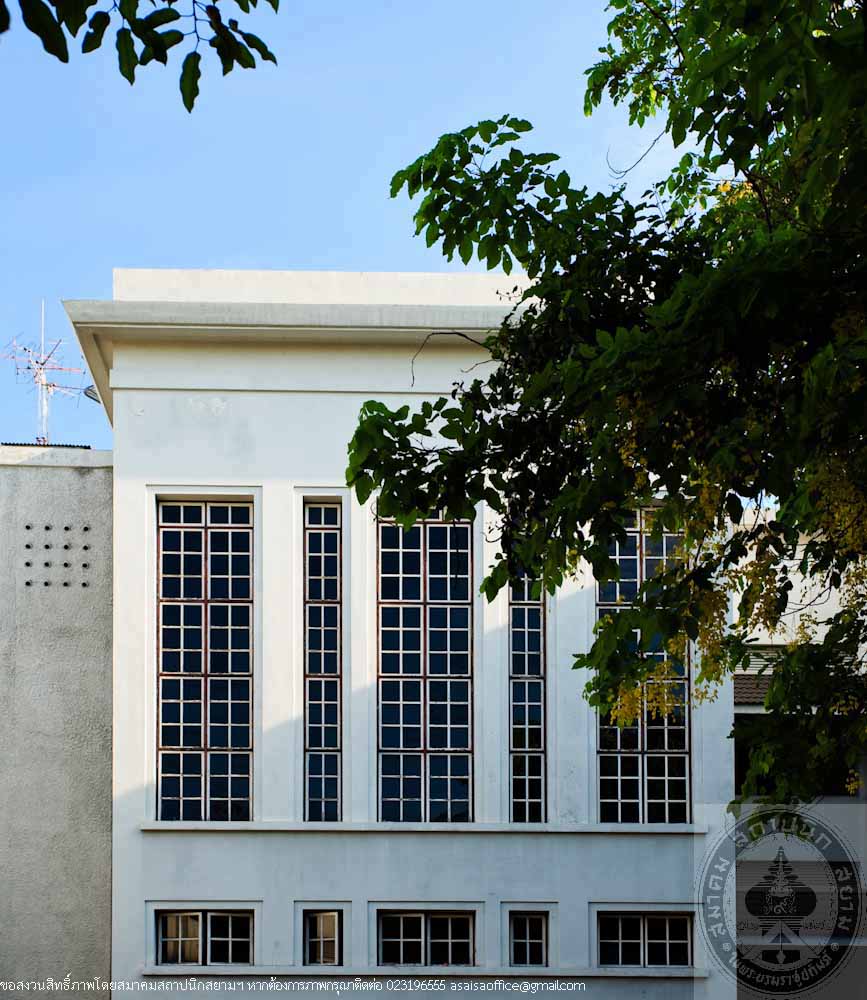
กลุ่มอาคารศาลยุติธรรม
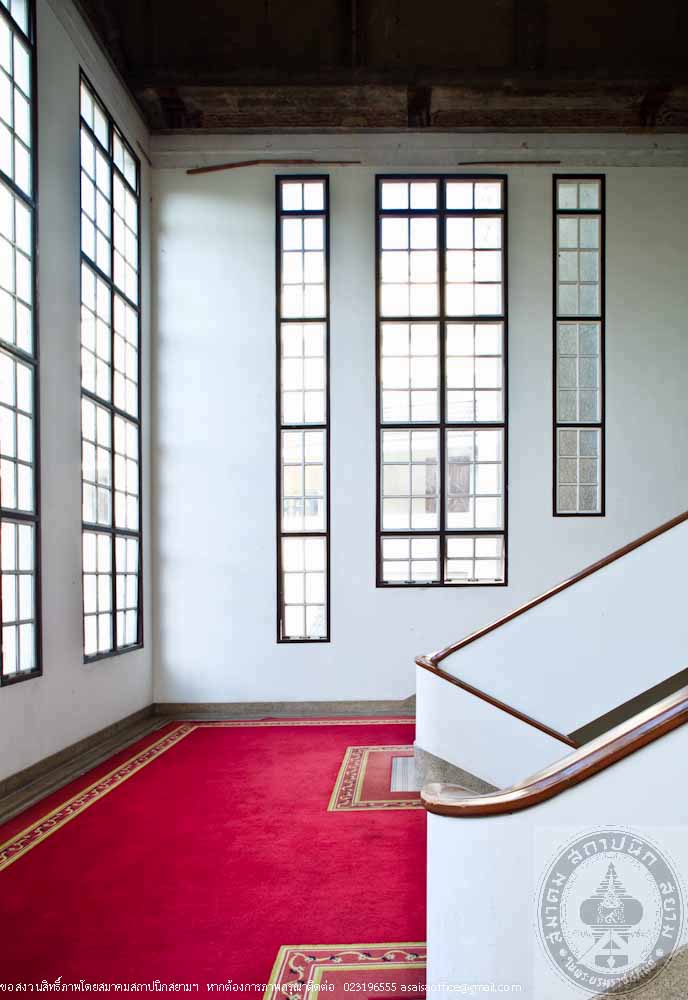
กลุ่มอาคารศาลยุติธรรม
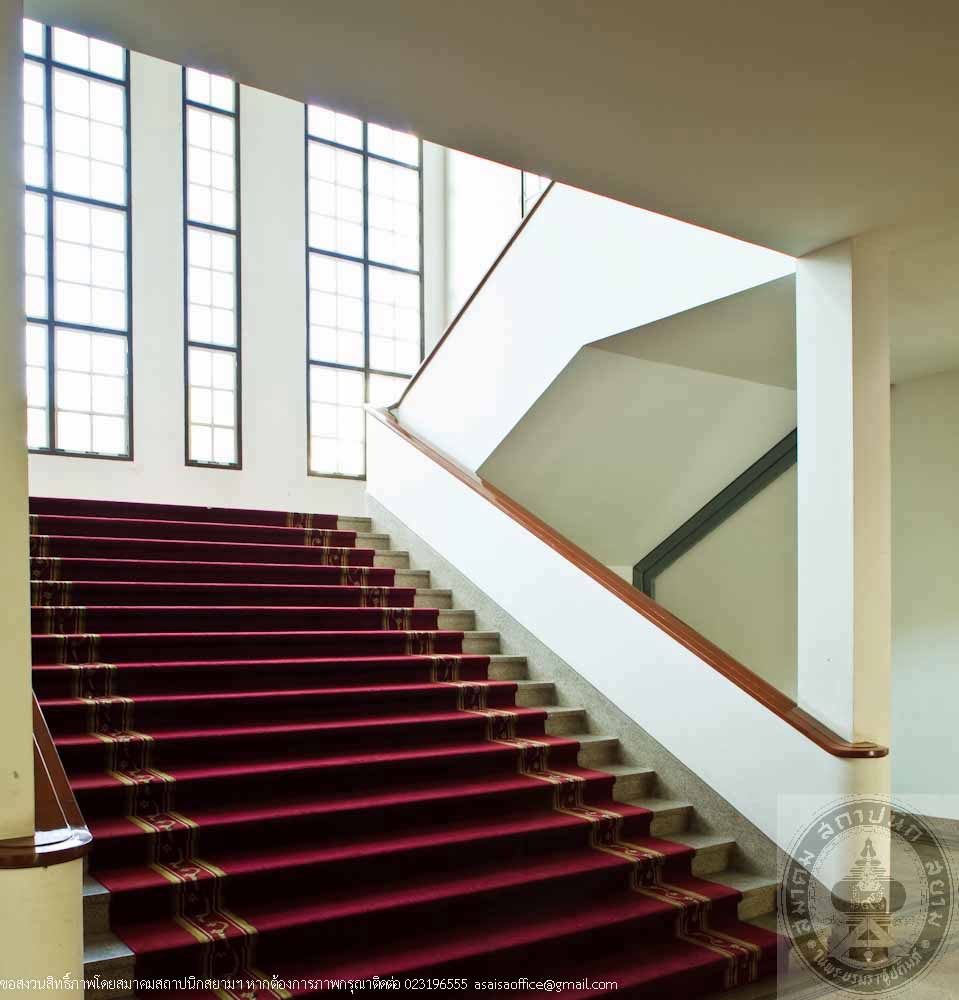
กลุ่มอาคารศาลยุติธรรม
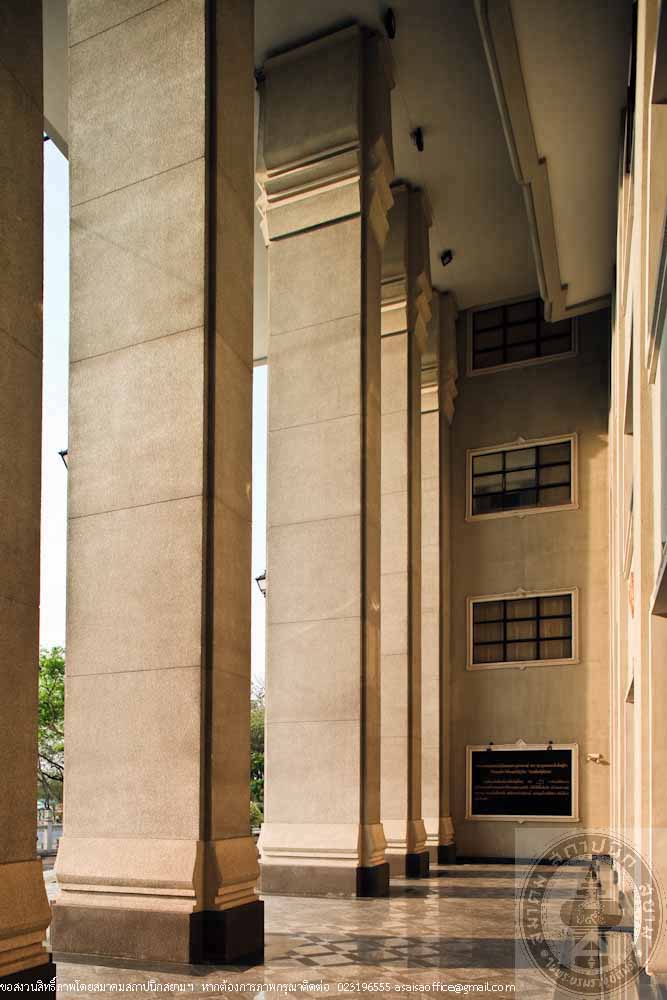
กลุ่มอาคารศาลยุติธรรม
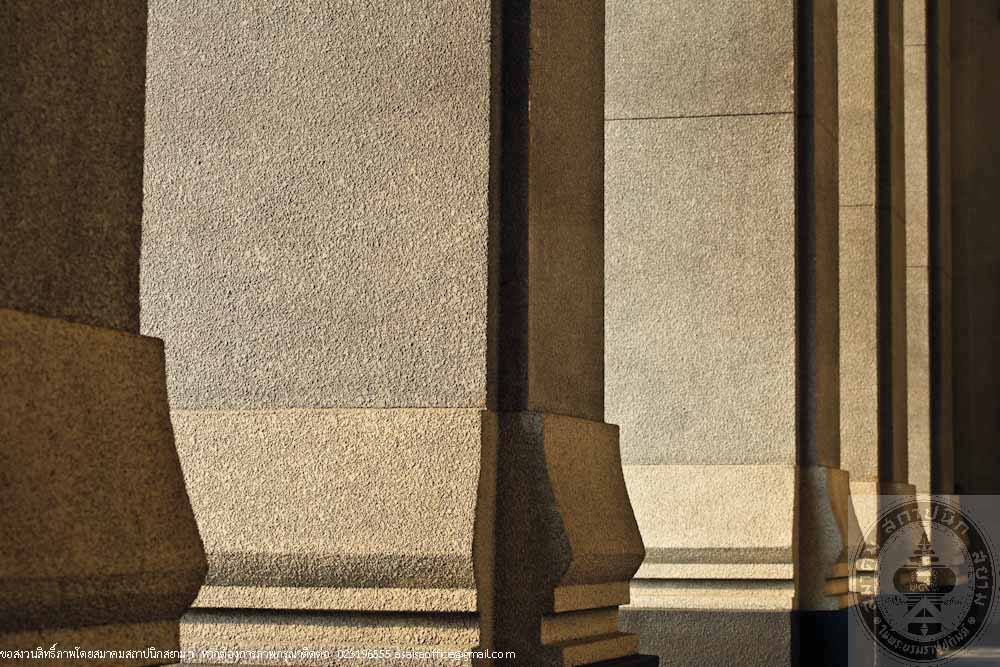
กลุ่มอาคารศาลยุติธรรม
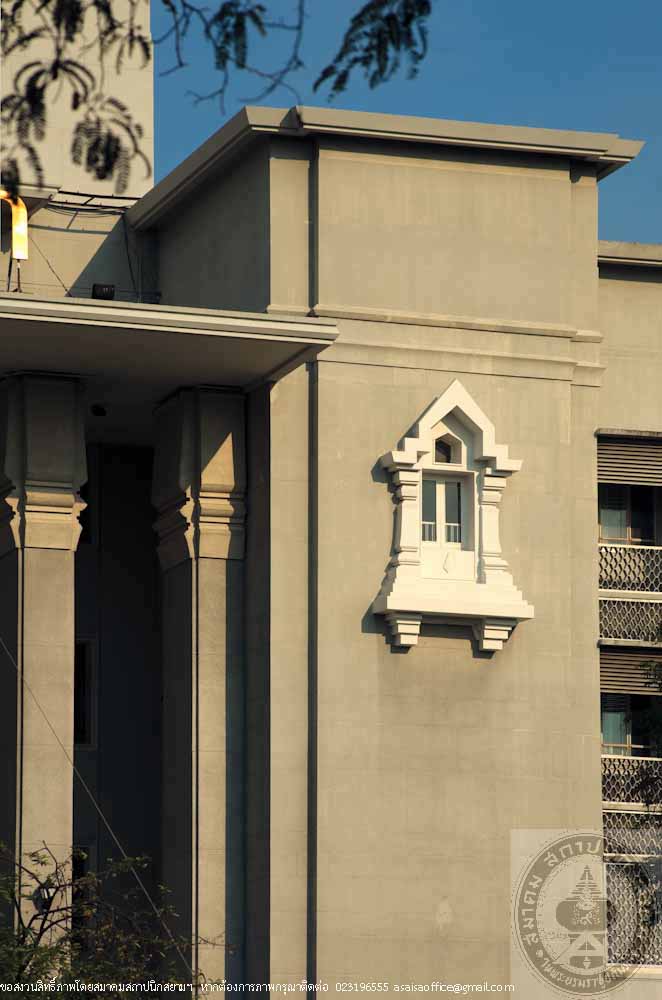
กลุ่มอาคารศาลยุติธรรม
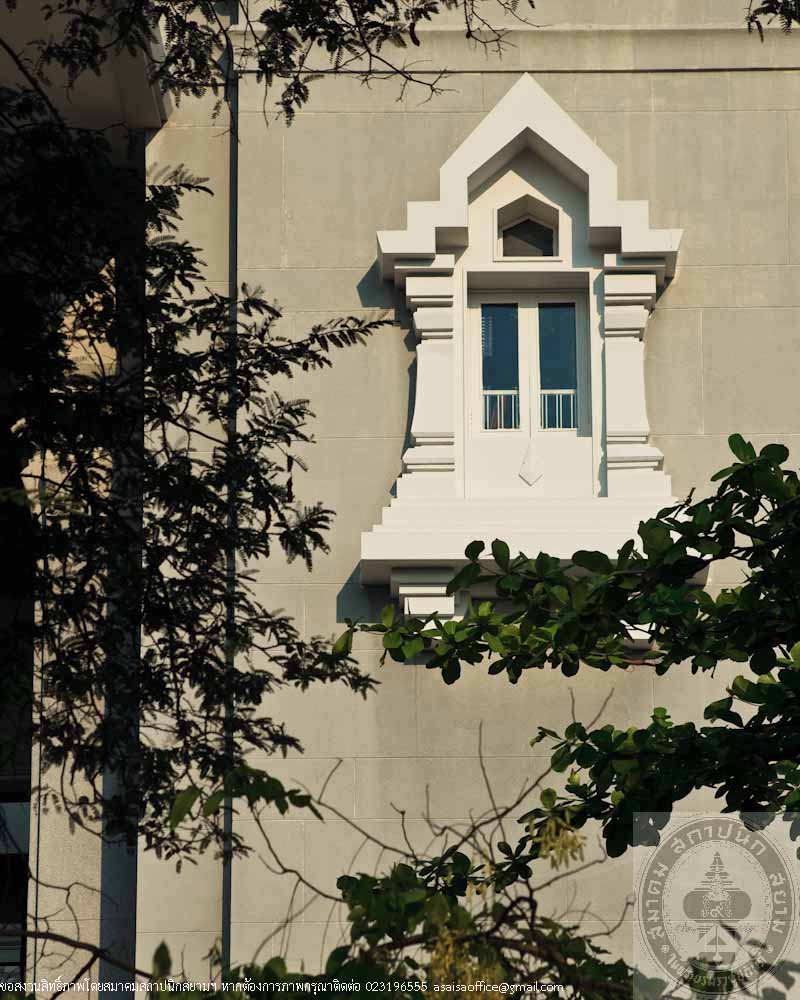
กลุ่มอาคารศาลยุติธรรม
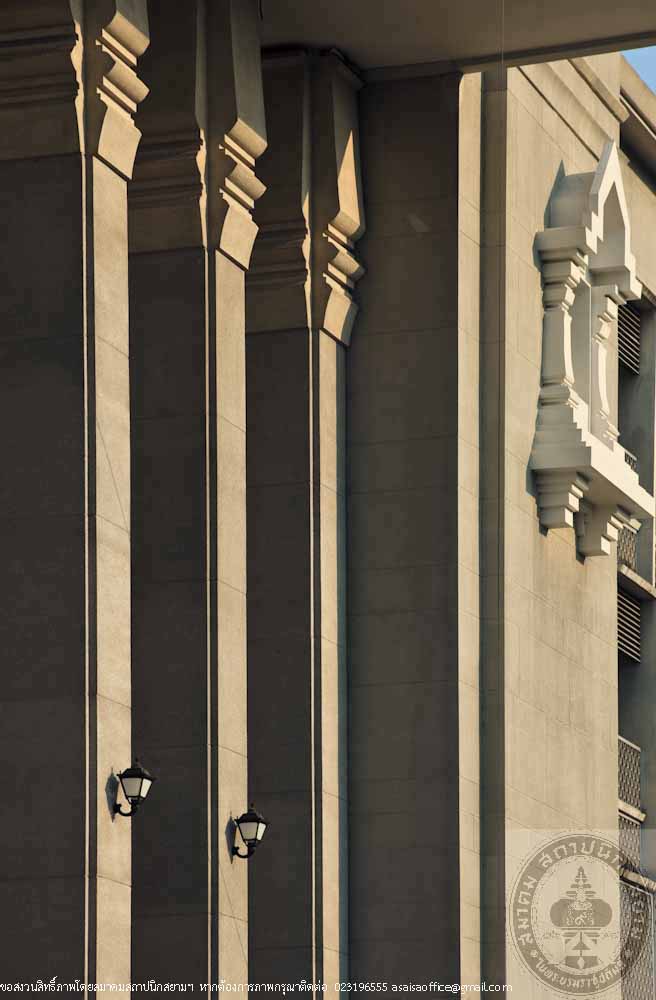
กลุ่มอาคารศาลยุติธรรม
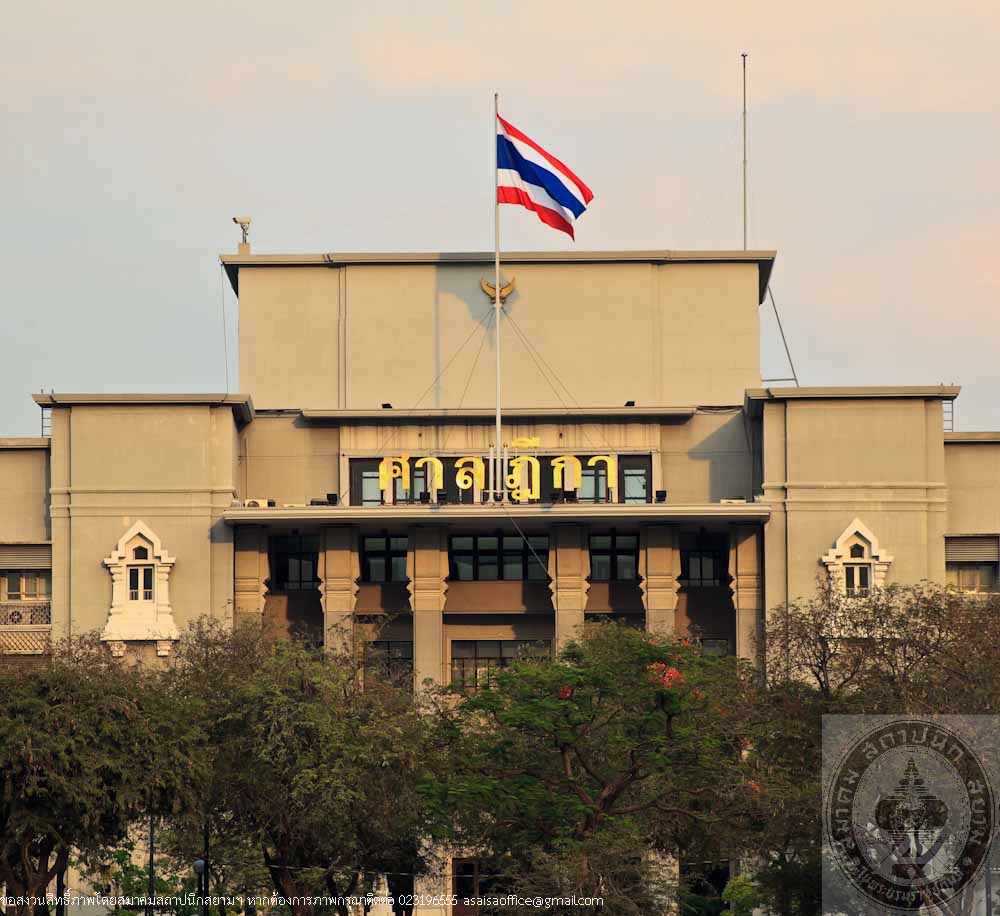
กลุ่มอาคารศาลยุติธรรม
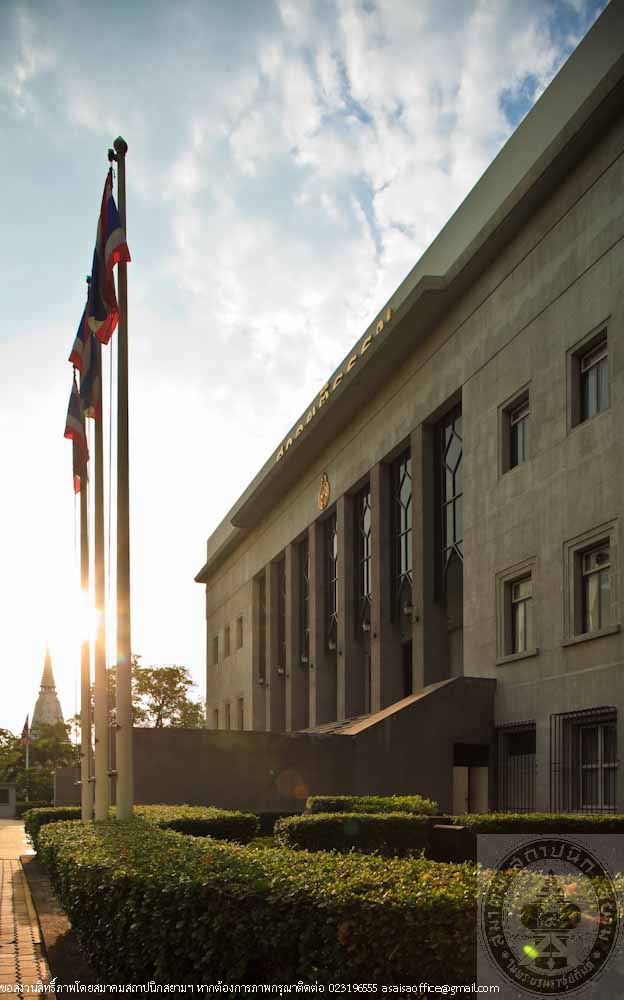
กลุ่มอาคารศาลยุติธรรม
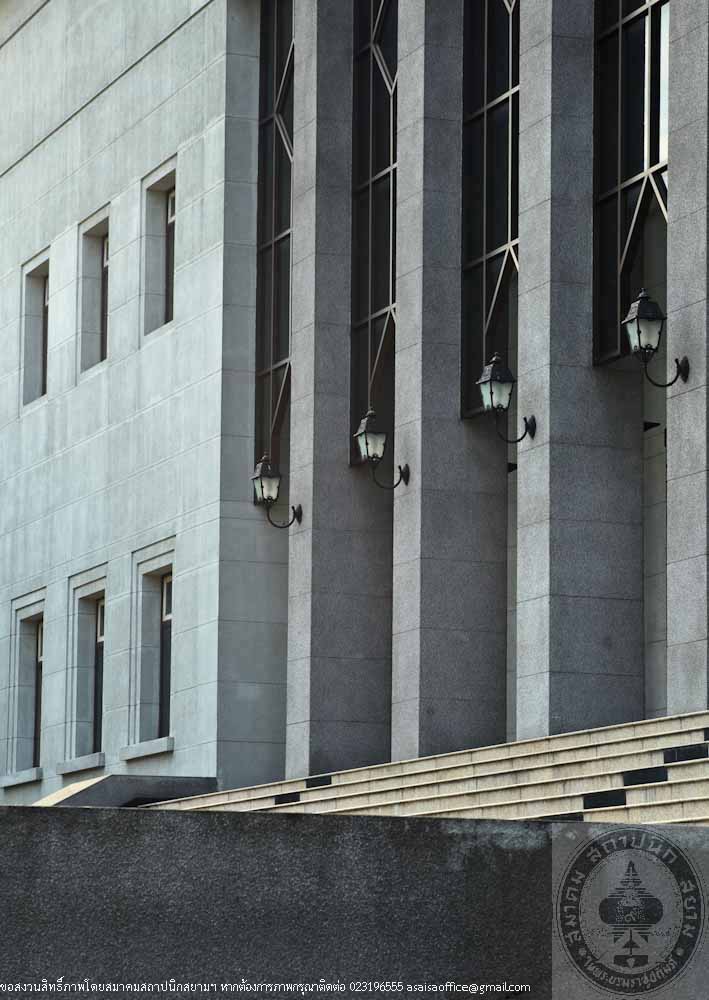
กลุ่มอาคารศาลยุติธรรม
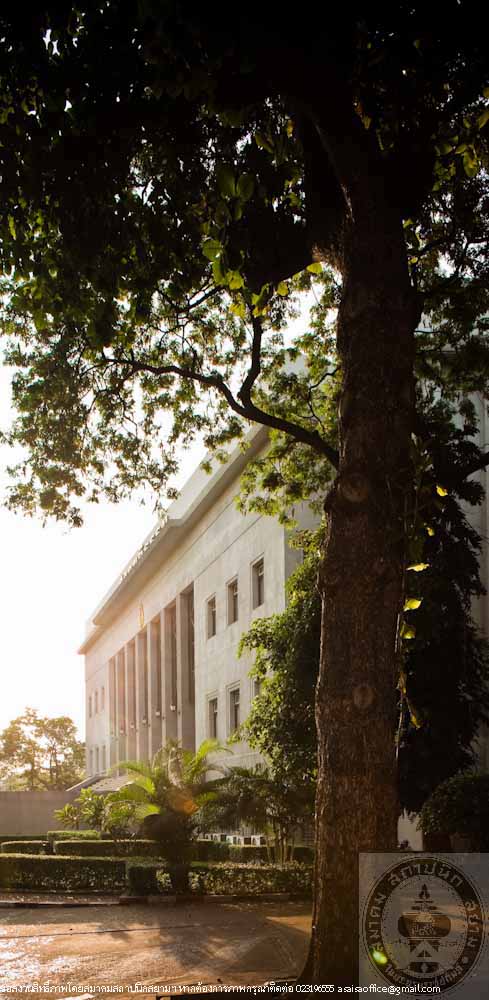
กลุ่มอาคารศาลยุติธรรม
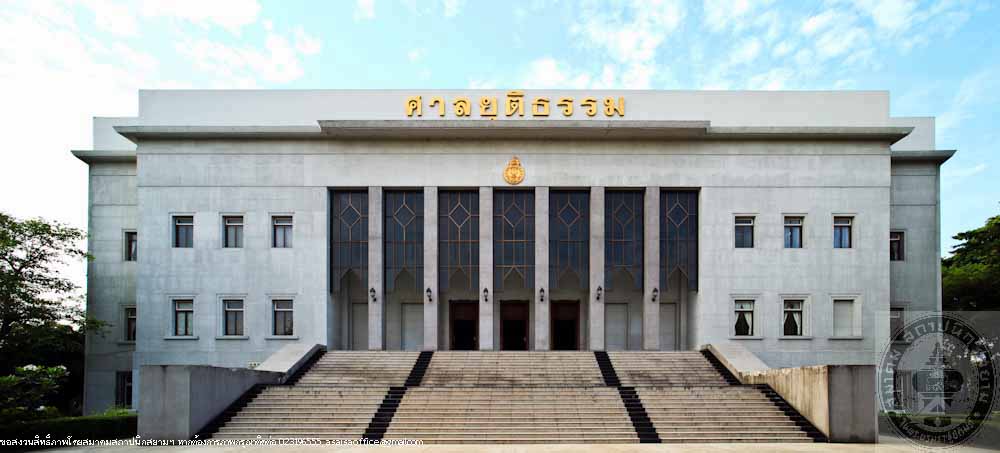
กลุ่มอาคารศาลยุติธรรม
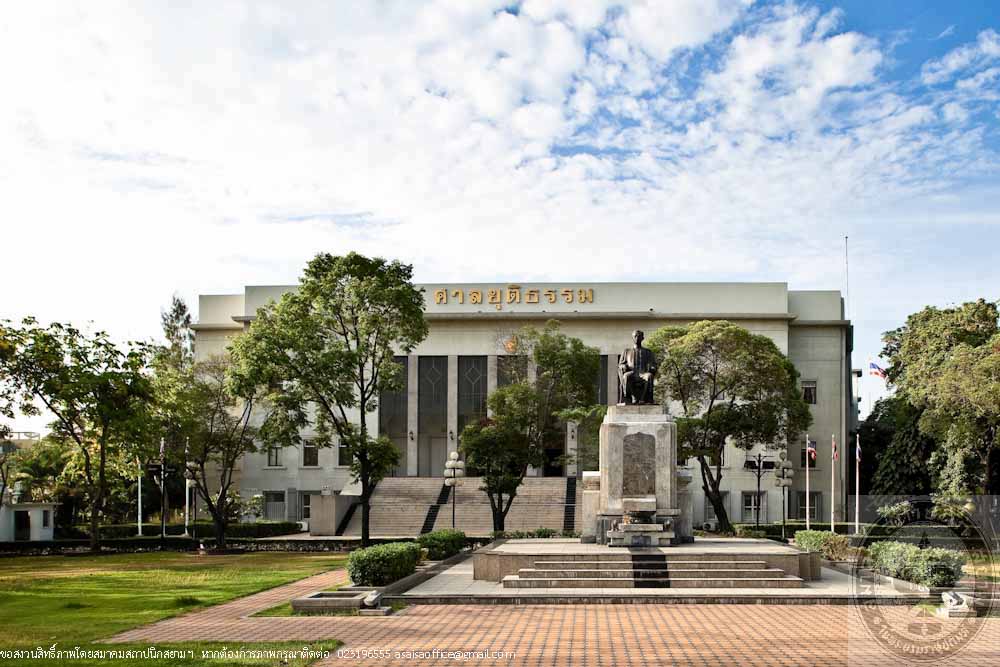
กลุ่มอาคารศาลยุติธรรม
-

กลุ่มอาคารศาลยุติธรรม
-

กลุ่มอาคารศาลยุติธรรม
-

กลุ่มอาคารศาลยุติธรรม
-

กลุ่มอาคารศาลยุติธรรม
-

กลุ่มอาคารศาลยุติธรรม
-

กลุ่มอาคารศาลยุติธรรม
-

กลุ่มอาคารศาลยุติธรรม
-

กลุ่มอาคารศาลยุติธรรม
-

กลุ่มอาคารศาลยุติธรรม
-

กลุ่มอาคารศาลยุติธรรม
-

กลุ่มอาคารศาลยุติธรรม
-

กลุ่มอาคารศาลยุติธรรม
-

กลุ่มอาคารศาลยุติธรรม
-

กลุ่มอาคารศาลยุติธรรม
Court of Justice
Location Ratchadamnoen Road, Khwaeng Phra Borom Maha Ratchawang, Khet Pra Nakorn, Bangkok
Architect / Designer Phra Sarocharattanimmaan (Saroch Sukkayang)
Proprietor Ministry of Justice
Date of Construction 1939
Conservation Awarded 2009
History
The complex of the Court of Justice was established in 1939 by Phra Sarocharattanimmaan (Saroch Sukkayang). Before drawing the plans, the government sent him to visit a court in Singapore and bring back architectural information. The opening ceremony of the Court of Justice was held in 1941 by Phra Ong Jao Atit Tiphaya Apa.
The buildings are laid out in a “U” shape divided into three sections. The first section was built in 1939 for the Court of Justice. The second section is the building nearby the “Ku Muang Doem Canal”, completed in 1943. This section is used as the Court of Appeals. The third section is the Supreme Court. It sits on the site of a former Justice Court used during the reign of King Rama V that was demolished in 1959. In 1963, a new building was erected and installed as the Supreme Court. The architecture was influenced bymodernism, which was the main architectural trend of that period. The concept of modernist architecture was well-known during the reign of King Rama V by groups of Thai students who studied in Europe. However, the popularity of this style didn’t become wide spread until after the revolution of 1932 where the modernist style can now be found in various important public buildings.
This building holds the Justice Court and the Independence Memorial. Its modern architectural style was popular in the period of the People’s Party, after the 1932 revolution. The entire construction is a valuable national architectural heritage site and the land it is built on has a long history as a justice court. The building exposes the arts and architectural styles of the old period and represents a good source of knowledge on our national history, our society and political system. Thus, the buildings of the Justice Court and the Supreme Court are worthy of being preserved.